Athens of the South
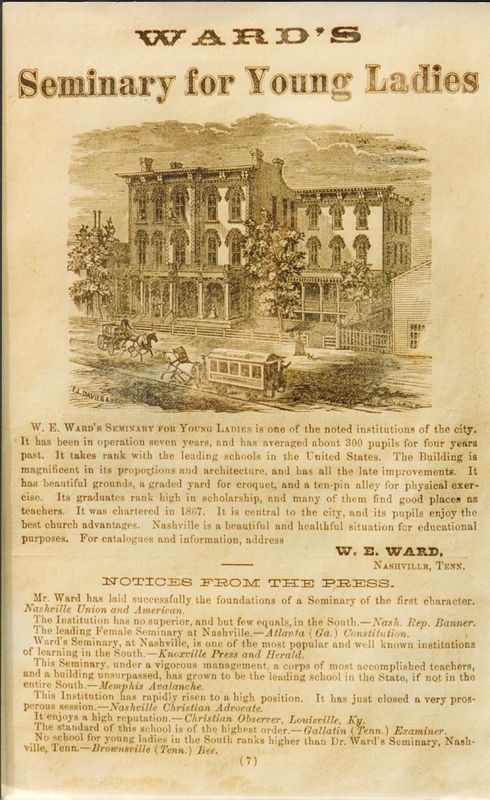
On Rosa Parks Blvd., one block north of Broadway visit the former site of Ward Seminary. The original address was 15 Spruce Street before downtown street were renamed using numbers (and later Rosa Parks Blvd.). This school opened in 1865 with Dr. William E. Ward, and his wife, Eliza Hudson Ward. It was a premier school for girls and young women. Ward Seminary merged with Belmont College for Young Women in 1913 and moved to the present-day campus of Belmont University, approximately two miles from downtown. Ward-Belmont closed in 1951.
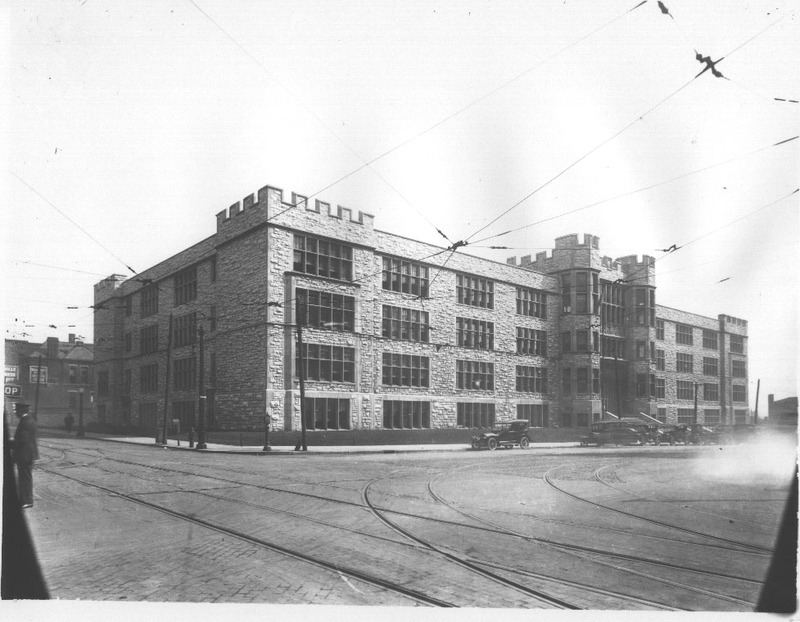
At the corner of Eighth Avenue and Broadway, find the marker for Nashville's first public school. Twenty years later, the Fogg School opened in 1875 as Nashville's second public school. It was built on the same property but faced Broadway. In 1912, the two merged into Hume-Fogg at the present site at 700 Broadway, a Gothic Revival building.
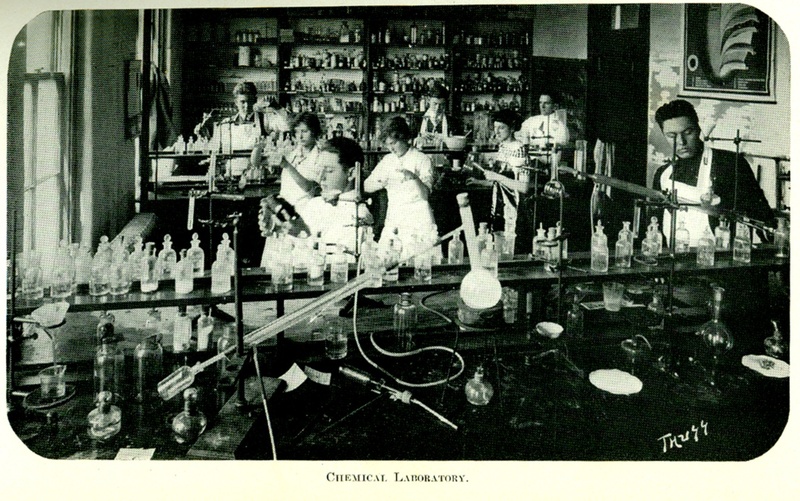
Church of Christ ministers David Lipscomb and James A. Harding founded Nashville Bible School, better known as David Lipscomb College, in 1891. The school’s mission was to train male preachers and female missionaries. The school’s location changed three times before 1893, when it purchased land and buildings on the Civil War site of the Battle of Nashville (an engagement that effectively ended the war in Tennessee in December 1864). The new campus was located on Granny White Pike in southwest Nashville and opened in 1903. After Lipscomb’s death in 1917, the school also changed its name to David Lipscomb College.
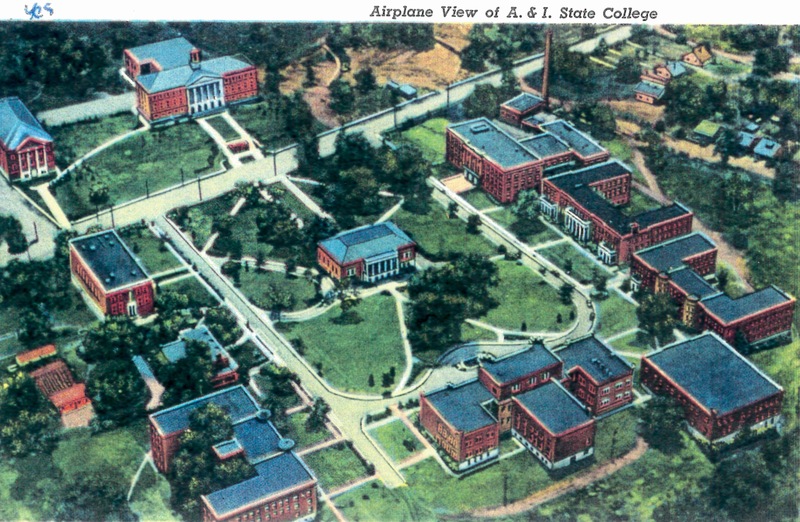
In contrast to the classical and professional curricula of Fisk University and Meharry Medical College, the State Agricultural and Industrial Normal School (a land-grant school) opened in 1912, offering training for the "farm and factory." Later known as Tennessee Agricultural and Industrial State Normal School (Tennessee A&I), it was the first African American school to be controlled and funded predominantly by the state. In 1920 the school admitted its first collegiate class in addition to those attending for industrial and vocational training. It became Tennessee State University in 1968. Oprah Winfrey and Olympian Wilma Rudolph are among TSU's most famous graduates.
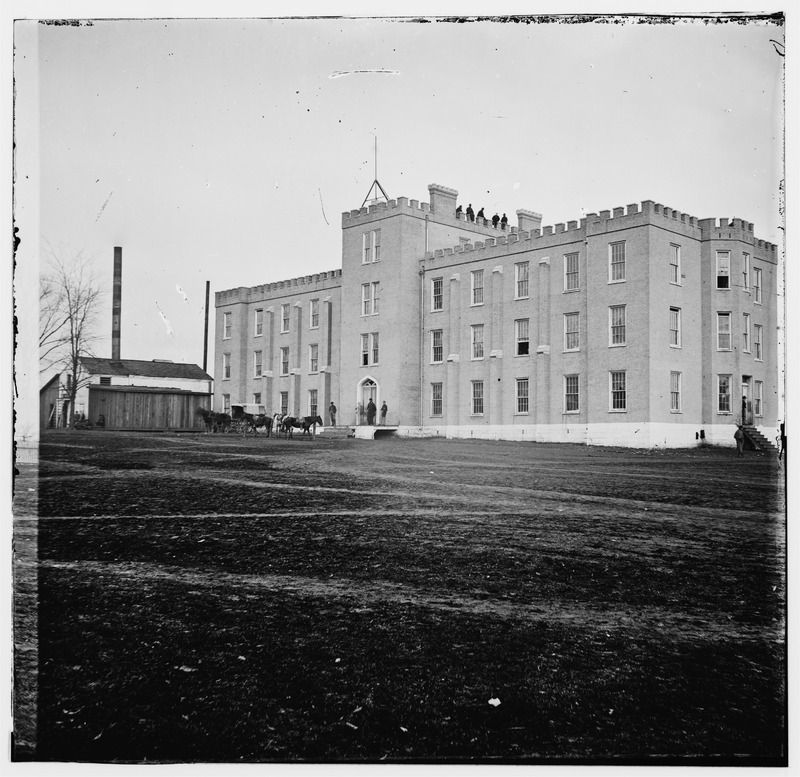
University of Nashville, which was originally chartered by the colony of North Carolina and moved to Nashville in 1785 under the direction of Nashville founders Richard Henderson, James Robertson, and Thomas Craighead. The school subsequently divided into Davidson Academy in Nashville and Cumberland College, located in nearby Lebanon. In 1826, Lindsley secured state financial support and changed the name of Davidson Academy to the University of Nashville. He helped the school purchase 120 acres of land on the edge of then-downtown Nashville and expanded it into six associated divisions, including an Agricultural College, Medical School, Law School, Dental School, and Teacher’s College. Several local colleges and schools have historical ties to the University of Nashville, but it ceased to operate as an independent university in 1909.
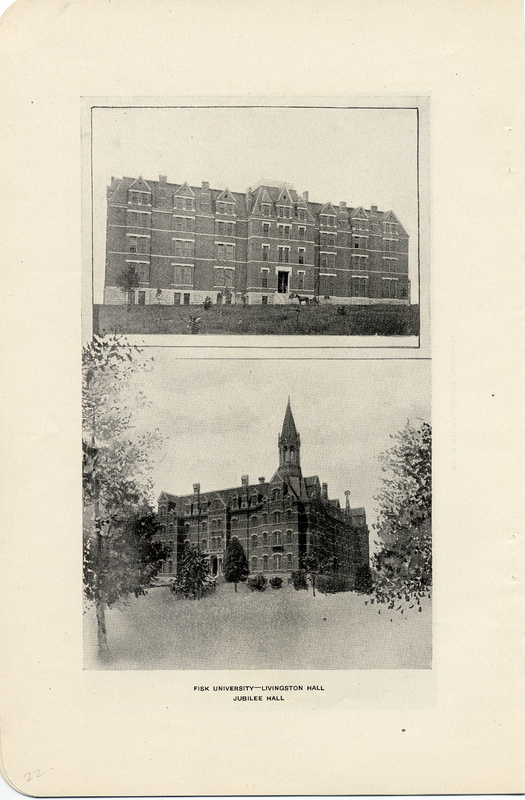
In 1866 the American Missionary Association (AMA) and the Freedman’s Bureau chartered Fisk University. After the Civil War, General Clinton B. Fisk was appointed an assistant commissioner of the Freedmen’s Bureau and played a prominent role in aiding the AMA with the acquisition of land and the construction of early buildings. In 1870, under the leadership of the school’s principal Adam K. Spence, Fisk University relocated to its current location in north Nashville. Fisk University was instrumental in the formation of an educated black middle- and upper-class. Some of its notable alumni include W.E.B. DuBois and members of the Fisk Jubilee Singers.
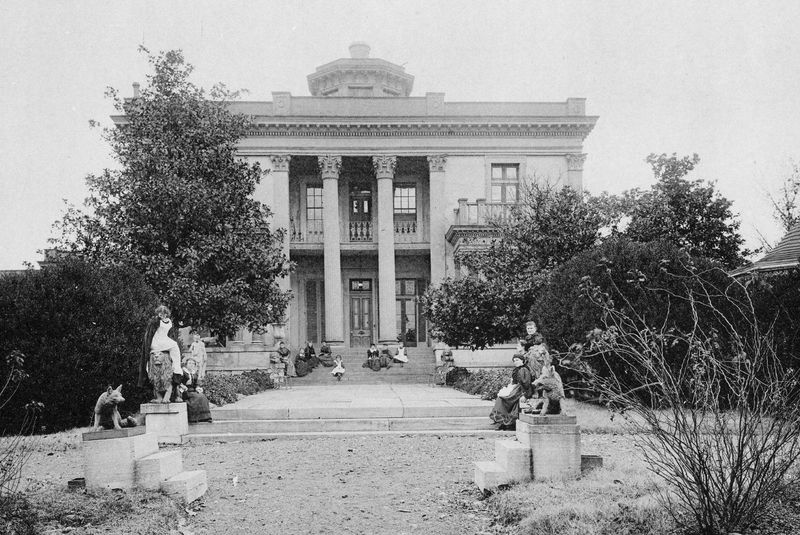
Two female educators from Philadelphia, Susan Herron and Ida Hood, opened Belmont College for Young Women with ninety students in 1890. The campus was located on the Belle Monte estate, former home of Adelicia Acklen, an antebellum woman who was also one of the wealthiest women in the United States prior to the Civil War. Neither Ward Seminary nor Belmont College were accredited to confer bachelor’s degrees. After the two schools joined forces in 1913, Ward-Belmont emerged as a college preparatory school, music conservatory, and junior college with a strong regional reputation. In 1925 the school’s junior college was the first all-female school in the South to receive junior college accreditation by SACS. The school was located less than a mile from the campuses of Vanderbilt University and Peabody College. In 1951, Ward-Belmont was purchased by the Tennessee Baptist Convention and reopened in the fall of 1951 as Belmont College (today University), a four-year coeducational institution.
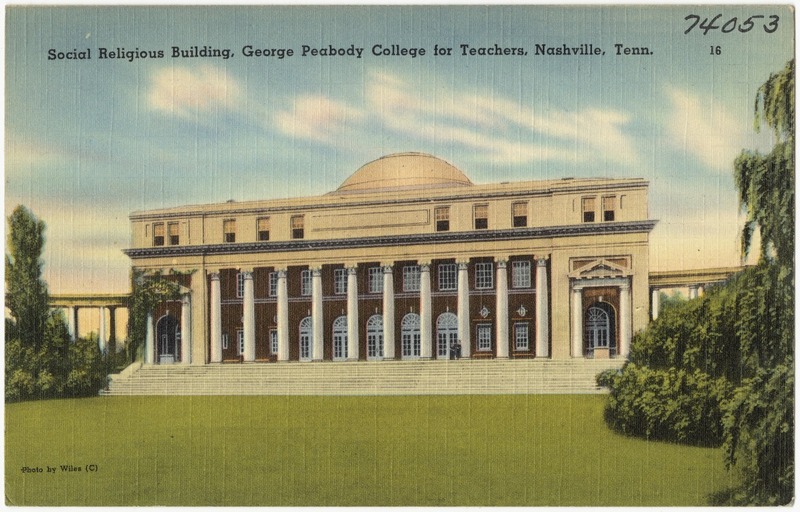
Peabody College grew out of the University of Nashville. In 1875, a new School of Education, also known as a “normal” school, opened as the State Normal College of Tennessee and shared the University of Nashville’s downtown campus. Several course programs were cross-listed as part of both schools. The normal school was established after a $1 million dollar gift from the Peabody Education Fund. The Peabody Education Fund had been founded eight years earlier with $3.5 million in funds. Beginning in 1877, curriculum changes at Peabody occurred under President William Payne, who reorganized the school, requiring certain courses and electives in order to earn particular degrees. Previously, most graduates earned a teaching certificate, denoted as an L.I. (licensure of instruction). In 1914, the campus moved from its downtown location and reopened as an independent institution on a new campus. The new campus was on the former site of Roger Williams University, across the street from Vanderbilt University on 21st Avenue. In 1979, Peabody merged with Vanderbilt University and is today the Peabody College of Education and Human Development.
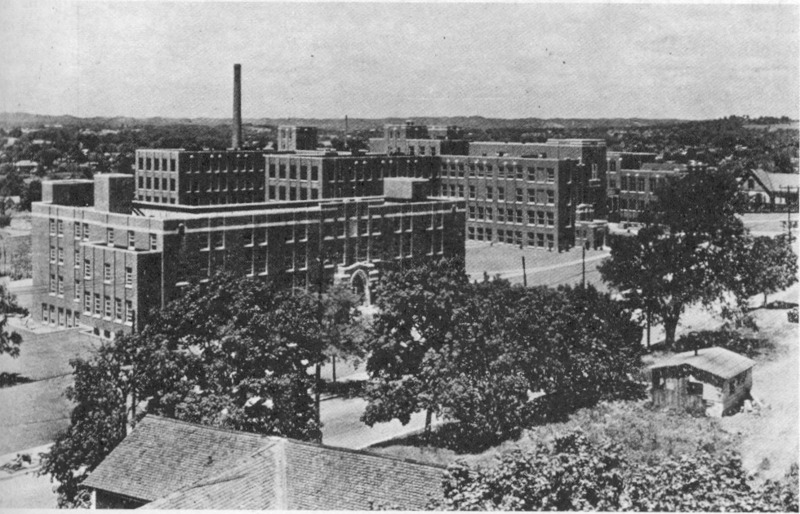
Meharry Medical College opened in 1876 under the auspices of Central Tennessee College as its Medical Department. Central Tennessee was initially organized as a basic community school for freedmen, chartered by the state in 1867. After 1900 Central Tennessee College changed to Walden University and then Walden College in 1915. Funded largely by the Freedmen’s Aid Society and Freedmen’s Bureau, Meharry Medical College operated in conjunction with Walden, but the school quickly gained individual recognition as a separate entity. By 1915 Meharry legally separated from Walden to form an independent medical college training African American doctors, nurses, dentists, and pharmacists. In 1931 a new campus was completed in northwest Nashville adjacent to Fisk University’s campus and less than two miles from Tennessee A&I. Meharry today remains one of only two predominantly and historically black medical schools in the United States.
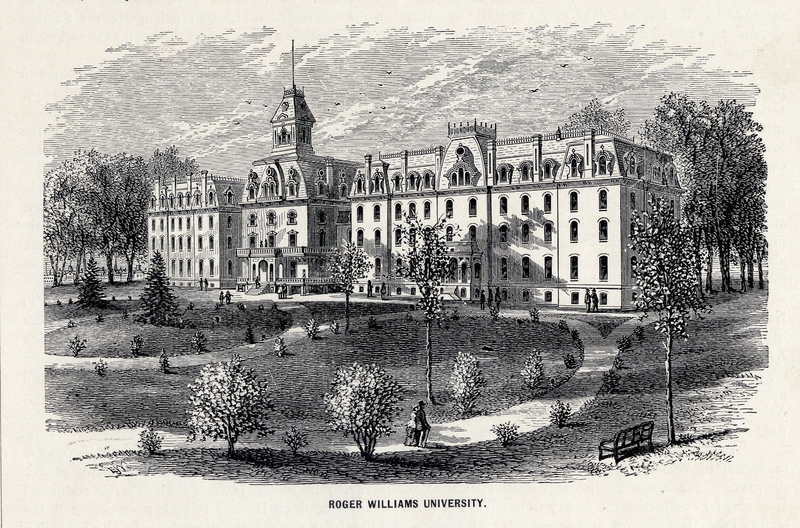
Roger Williams University first opened in 1864 under the auspices of the Nashville Normal and Theological Institute and grew out of the home of Reverend Daniel W. Phillips, an agent of the northern-based American Baptist Home Mission Society. By 1871 the school offered primary and secondary divisions as well as a “full collegiate curriculum” according to its catalog. Twelve years later the school was incorporated by the State of Tennessee as Roger Williams University. After its campus, adjacent to Vanderbilt, was destroyed by a series of suspicious fires in 1905 and 1909, Roger Williams University moved to north Nashville in closer proximity to other black colleges. The university’s former west Nashville location was sold to Peabody College, which moved there from its downtown campus in 1912. In 1929, the school merged with Lemoyne Owen College in Memphis.

Vanderbilt University, founded in 1873 with a $1 million donation by railroad tycoon Cornelius Vanderbilt, was built just two miles from the heart of downtown Nashville. The Commodore, as he was known, donated the money to establish an endowment for an ivy-league level university in the South. Bishop McTyeire supervised the university’s planning and construction, and he also headed the Board of Trustees. Landon C. Garland was appointed as Vanderbilt’s first chancellor and remained in this position from 1875 to 1893. It was governed by the Methodist Episcopal Church until 1915 when it became an independent university. As for competitive athletics, Vanderbilt’s first football game was held in 1890. With eleven Southern Intercollegiate Athletic Association (SIAA) conference titles between 1897 and 1923, the new Dudley Field was dedicated in 1922. It was an era of Vanderbilt football dominance not seen since. Vanderbilt continues to be a premier private university in the South.
Author and historian Henry McRaven wrote in 1949, "Just as Athens, Greece was recognized centuries ago as the center of learning, so Nashville was accredited from its very beginning as a community where the attributes of learning and the appreciation of the fine arts were reflected in the leadership of its men and women in all walks of life."
After the Civil War, the people of Nashville grappled with an evolving, collective identity as a New South city. At the center of this socially constructed enterprise were young men and women, both white and black, who had greater access to higher education through the city’s newly established schools, including Vanderbilt University, Fisk University, Ward-Belmont School, David Lipscomb College, Meharry Medical College, Roger Williams University, Peabody College, and Tennessee A&I. With greater numbers of young people attending colleges and universities, these factors combined to influence the trajectory of Nashville’s urbanization and distinctiveness as the a regional center of learning.
Between 1864 and 1912 nine institutions of higher education opened their doors in Nashville. These schools were top-tier educational heavyweights in their respective areas. Vanderbilt debuted as one of the top three universities in the South (along with Emory and Duke). By the end of the nineteenth century, “Vandy” was one of the country’s premier private universities; Peabody College was a leading teacher-training college, in the South as well as the U.S.; Fisk University was one of the nation’s most prestigious liberal arts universities for African Americans; Meharry Medical College stood as one of the only medical schools for African Americans, which also featured dental, pharmaceutical, and nursing schools; and Tennessee Agricultural and Industrial Normal School was the state’s first public college for African Americans, which followed a vocational training model.
While a handful of females attended previously all-male universities before 1900, most women attended single-sex schools. The Ward-Belmont School in Nashville combined two regionally recognized schools, Ward Seminary and Belmont College. At its peak in the 1920s, with an enrollment of over twelve hundred students from thirty-six states, Ward-Belmont was well known as a music conservatory and the first accredited junior college for women in the South. Catering to more specialized educational niches, David Lipscomb College emerged as the premier parochial arm of the Church of Christ. Meanwhile, Roger Williams University trained African American men and women as preachers, missionaries, and teachers. Nashville was unique not simply because of the quantity of colleges and universities but also because of their quality.
Excerpt from Athens of the New South: College Life and Making Modern Nashville (Knoxville: University of Tennessee Press, 2017) by Mary Ellen Pethel.
